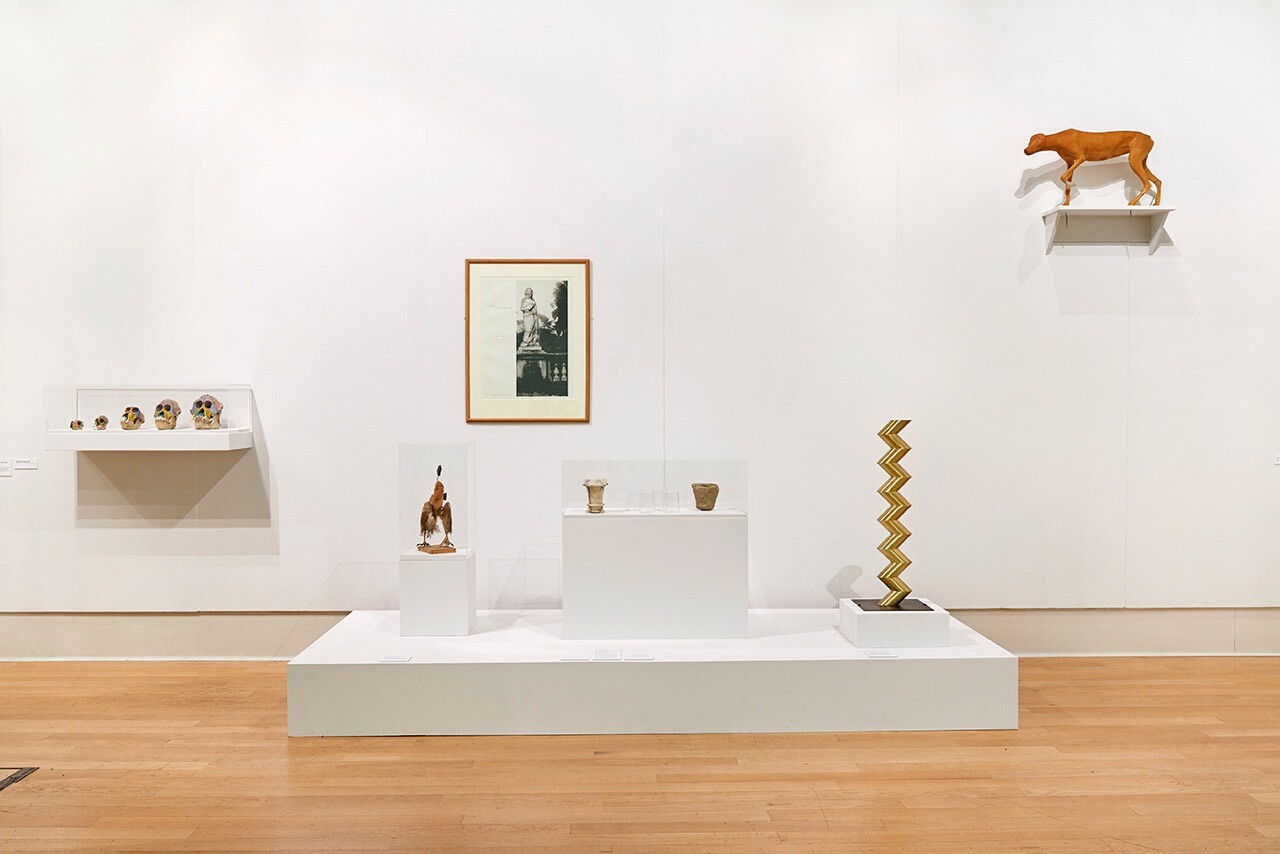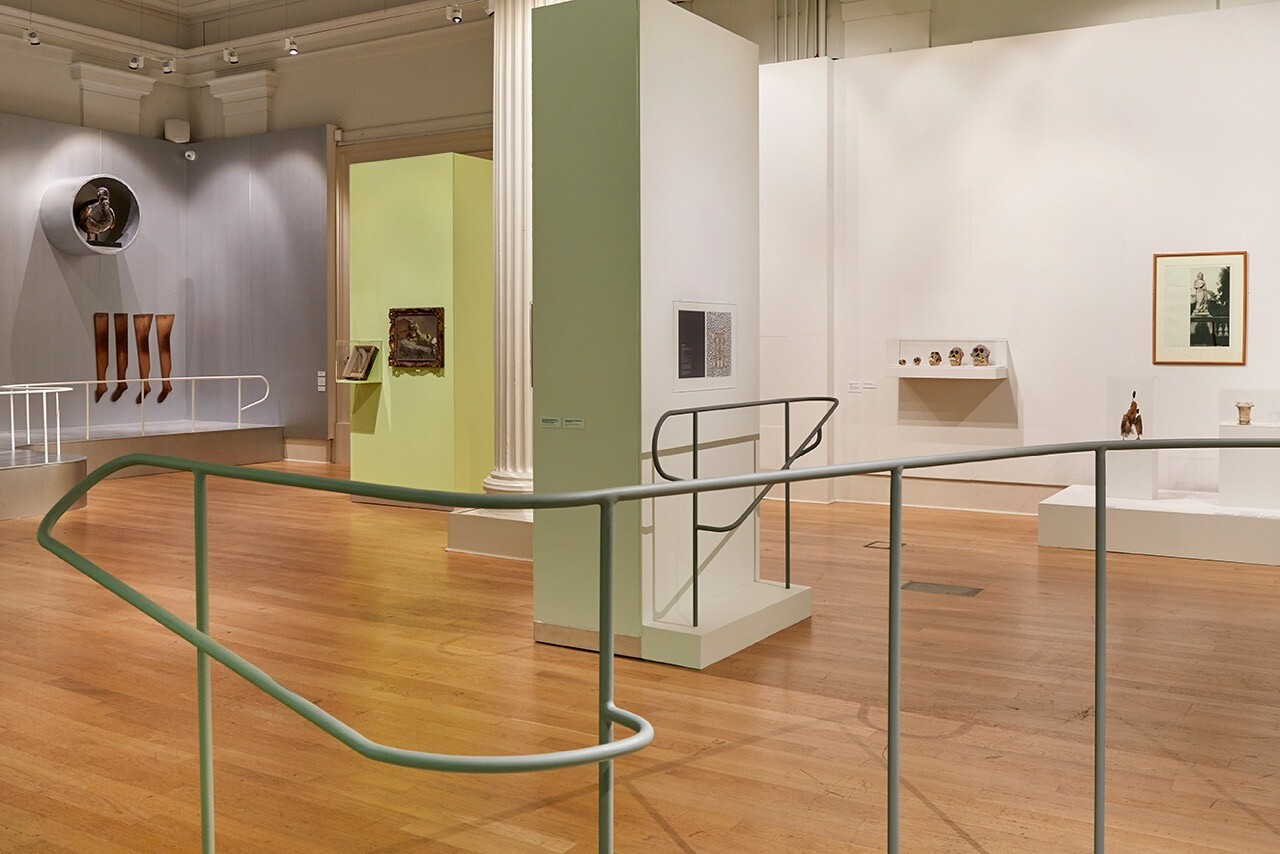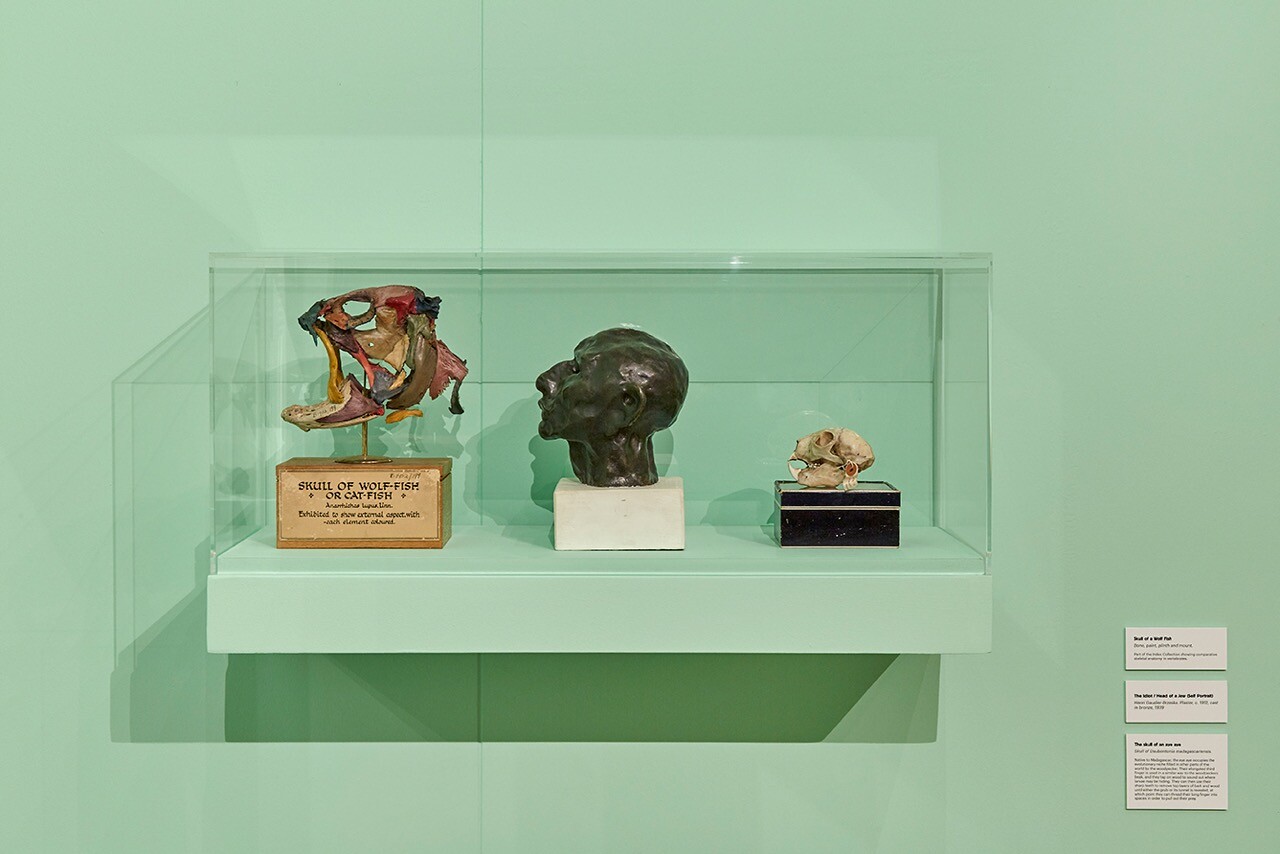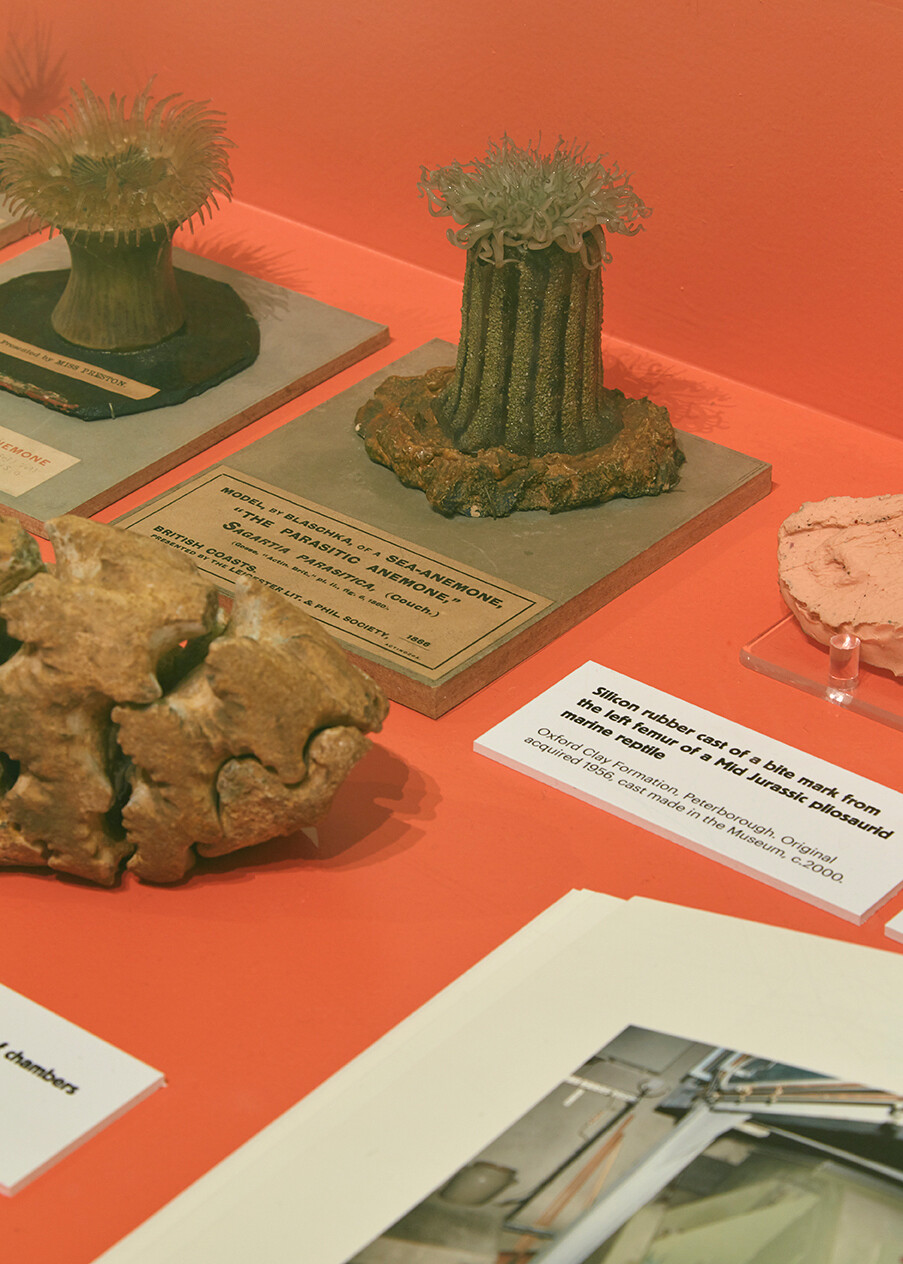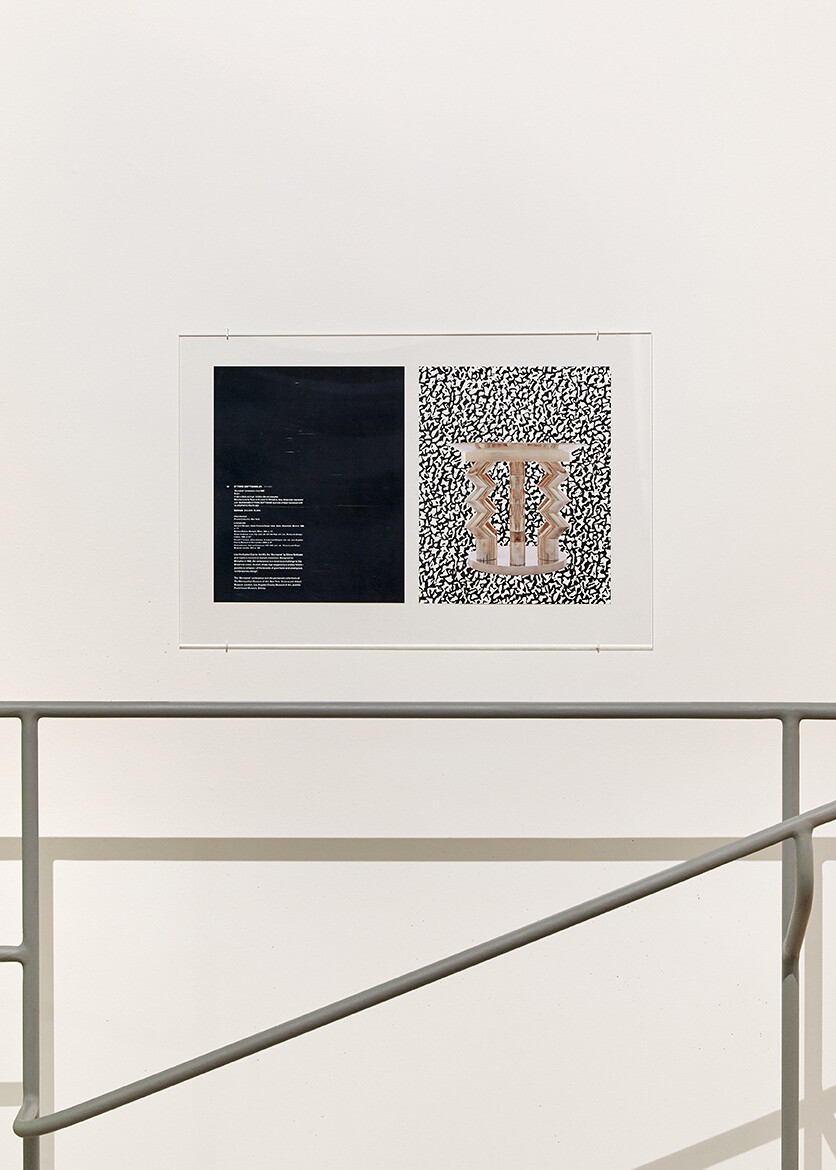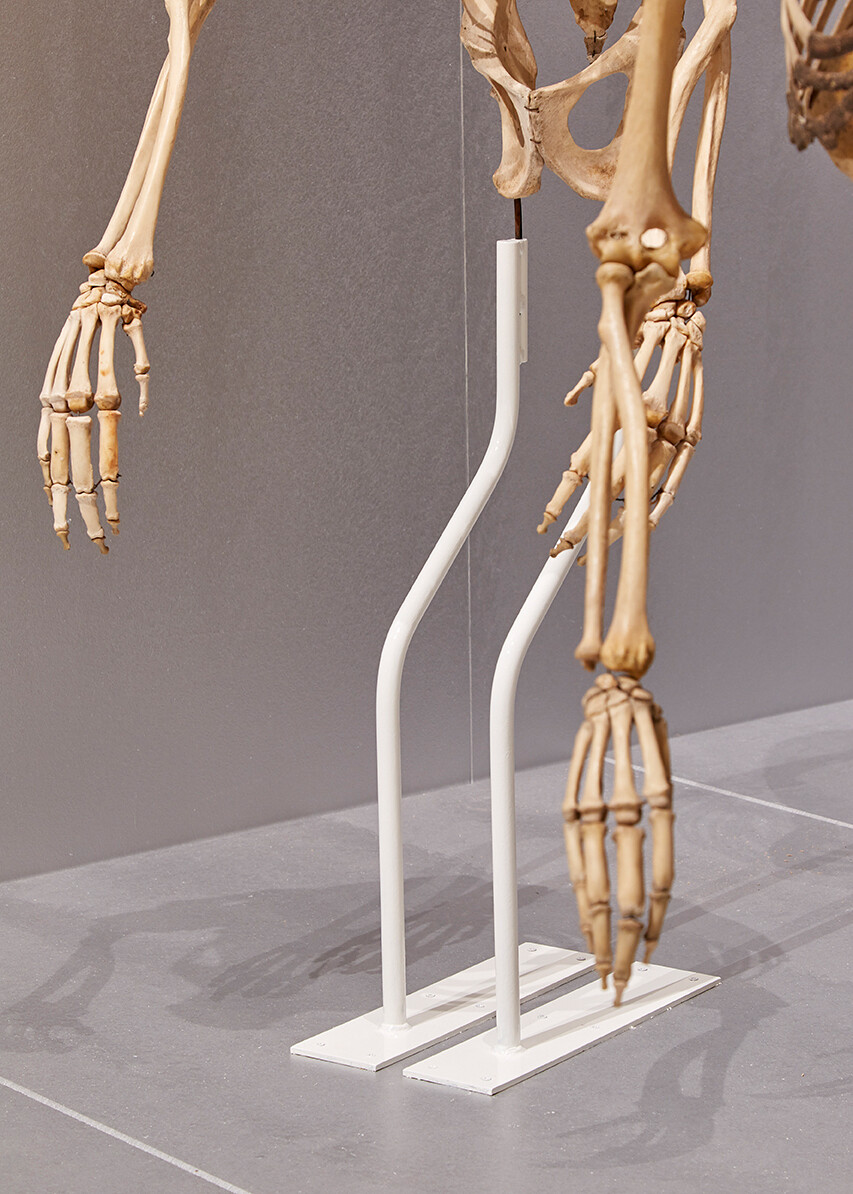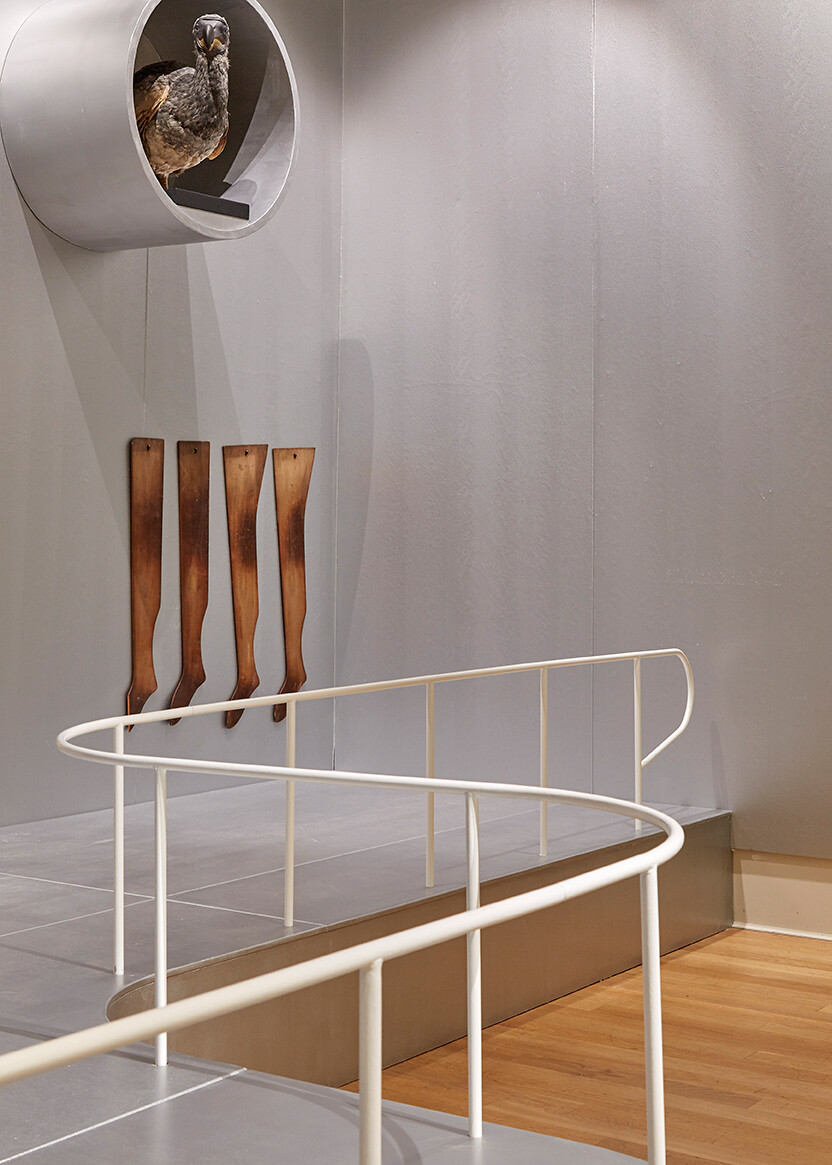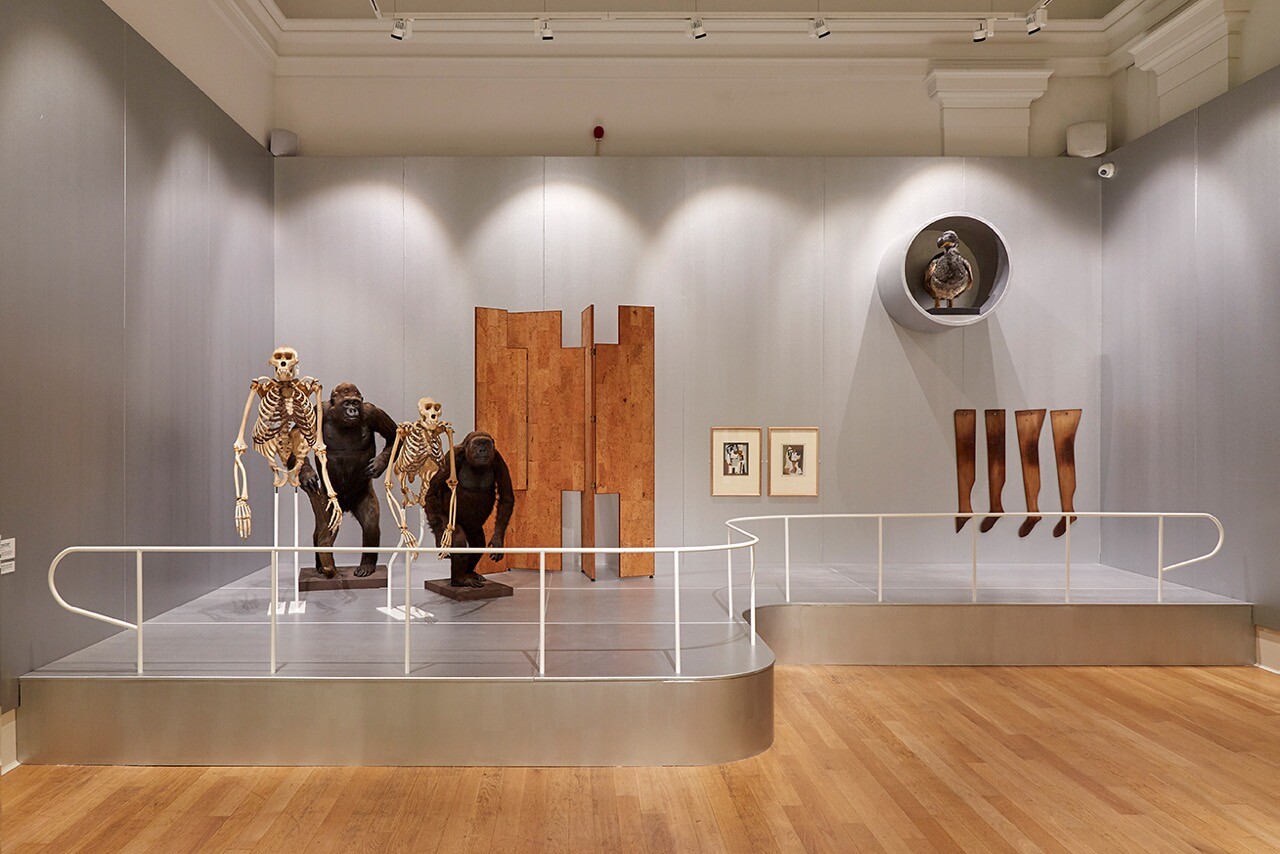What’s the difference between a model, a mimic, and a dupe? Taxonomy? Strategy? Spin? Mike Cooter attempts to answer such questions in this exhibition. Radar—a commissioning body based at Loughborough University—have tasked him with considering Polish dramatist, director, and artist Tadeusz Kantor’s (1915–1990) interest in the latent theatricality of and around objects (notably mannequins and stage props), which Cooter combined with the research conducted into animal mimicry by the naturalist Henry Walter Bates (1825–1892). Cooter’s exhibition draws on Leicester’s New Walk Museum’s collection and the industrial collections from another city museum, the Abbey Pumping Station, which he displays alongside his own works, to present a riff on the quirks of duplication, the whirl of object relations, and the droll inflection of human perspective on any given spectacle.
Cooter’s selection of paintings, prints, glassware, fossils, models, Victorian machinery, and damaged taxidermy—all set within an elegantly partitioned and color-coded space in this bright, nineteenth-century museum—is commanding. Large display shelves are cut to fit arrangements and hung at different levels. These horizontal undulations run through vertical sections of color, in mint green, acid yellow, and reflective silver, the scheme offset with vitrines and fabricated rails. Cooter’s sculptures, Guidance 1 and 2 (both 2018), are based on the handrail designs of Swedish architect Sigurd Lewerentz, known for his metalwork fixtures and the fastidious onsite modifications he made when they were installed. Having refabricated these fixtures, removed from their original ecclesiastical context (Lewerentz designed several churches), Cooter’s sculptures bend and double back on one another, like a museum invigilator who frowns, and then winks, at self-conscious visitors.
Curious object pairings inhibit academic readings and—often accompanied by strange, circuitous wall labels penned by Cooter—throw other formal possibilities into play. An early Eileen Gray collage (Untitled, 1940–1949) from the museum’s collection hangs beside a nineteenth-century entomology display of butterflies from the Amazon (collected between 1848 and 1859), their mirrored wing patterns similar to the elegant, muted tones and winding internal contours of Gray’s abstraction. Cooter’s wall label emphasizes her use of drawing and collage in the composition of industrial and architectural designs, a scaling-up that deflects attention away from the exhibits and back toward the room. Transitions such as these establish the exhibition as a game of metamorphosis, of shape-shifting and spatial inversion.
Cooter’s playful show is not designed as a linear narrative: relationships and similitudes often only make sense after several tours of the space. Past more hanging entomology drawers and a 1920s folio of Albrecht Dürer’s Melencolia I—that icon of broody introspection—stands a Victorian vitrine full of fossils and sea anemones, glass eyes used in taxidermy, and a satirical editorial cartoon by Ad Reinhardt lambasting satirical editorial cartoons (How to Draw Political Cartoons, 1944). Above the vitrine hangs a Hogarth print, Characters and Caricatures (1743), with a slew of faces variously rendered—what happens when the artist’s pen roves slightly to distort a subject’s nose? There are broader questions here too—among geological, maritime, and artistic models—not only of perspective but prerogative: about lines and lies and slippages, natural, accidental, and political.
By the silver-schemed display, two taxidermy gorillas, female and male, stand on a stage-like platform, as if to address the room. One step ahead of them are propped two compatibly sized skeletons—the gorillas’. It’s like a Tex Avery fight scene. Beside the primates, stuffed and stripped, stands a four-fold screen by Gray (1960, 1973) fabricated in cork and mahogany, its angled contours connected with orderly modularity. Set beside the apes, Gray’s screen looks more outlandish than stylish: there’s lunacy on this stage, and no body or thing can escape it. Nearby, two Picasso lithographs from his “Dix Pochoirs” (Ten Stencils) series (1920) show lively cutout abstractions of an artist and a musician. Adjacent to these, four wooden lathes hang from nails: leg-shaped boards for shaping nylon tights. They have the dark stain of age. Picasso might have used them as a stencil in some parallel, cartoon universe. Above this theater of absurdity perches a stuffed dodo. It’s a museum facsimile—no real taxidermy dodos exist.
On an acid yellow-green wall hangs Walter Sickert’s The Yellow Sleeve (1903–1904), a painting of a reclining young woman in a dull, muddy palette, the composition lit up by her yellow-green sleeve, which is painted loosely, like chiffon fizzing against her pale, slender arm. Her lip and earlobe are marked by tiny, gorgeous inflections of choral red, the same shade that covers Cooter’s vitrine interior and one of his rails. Sickert’s illuminations are the key to Cooter’s color scheme: sparks of life found in small details, quirks, and eccentricities grappled from the quotidian throng of models and duplicates, replicas, and dupes.
Something in Cooter’s mise-en-scène reminds me of other artist-curated shows—such as Mark Wallinger’s “The Russian Linesman” (2009), or Mark Leckey’s “The Universal Addressability of Dumb Things” (2013), both organized by Hayward Gallery Touring—and their object-aided quests to reify the thresholds, or barriers, between mental and material environments. Cooter’s capacity to nuance the space between objects, to compose sweeps and throws among dupes and specters, brings Joan Miró–esque exuberance to Kantor’s uncanny scenography, creating a musicality and theatricality of context that is both pleasurable and perplexing. I end where I begin, at his handrails that fold back on themselves, stubborn, subtle, and self-effacing.

